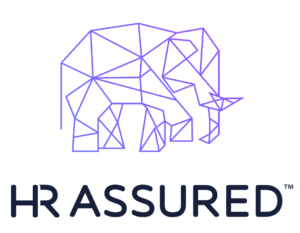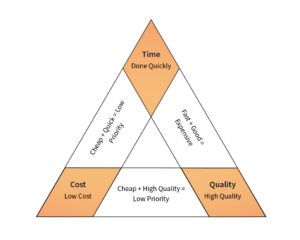Compliance made easier: It’s about behaviour and values
June 22, 2020I remember presenting a challenge to a Board meeting once: “What do you rate this company on a scale from 0-5 in the area of diversity?” It was a trick question (with the Chairperson’s approval, of course). Most of the Board members opted for a 4, cautiously affirming, but not excessively so. Braver ones opted for a 3, acknowledging that there was probably lots of work to be done. The Sales Director, a predictably bullish individual, insisted we were a full 5, no question! The trick was, that on this scale, the range was 1-5, and 0 was reserved for any company rating itself a 5.
Why? The lesson here was not about diversity, it was about teachability and sober self-reflection. About humility, and honesty. Because if we think we are perfect, then we have stopped learning and we have stopped growing. There is nothing that can be done for us except to wait for our eventual fall from grace, and to maybe write up a case study for others on how it might have been avoided.
Why do I open with that seemingly random anecdote?
Values
The question of how real an organisation’s “corporate values” are has always been an interesting one. It’s a difficult discussion because it generally only happens when there is some uncomfortable dissonance and a need for reflection (hence, the intro!)
We all have an intrinsic set of values. Our personal, individual values come from our family and relationships, culture, experiences, circumstances and belief systems that have been worked into our subconscious. We may never put them into words, but they define us.
These values govern our response to situations. The test of our deepest values is the price we are willing to pay to stay true to them. It’s hard to forget my most remarkable lesson in this: a friend of mine in the military believed in “Leave no-one behind” so strongly that, after he went back into a hail of bullets for our fallen mate, we ended up burying them both.1
Corporations don’t have intrinsic values. They have chosen sets of values that define them. Every workplace is a mix of those chosen values and the personal values held by each person employed there. (The more influential the employee, the more influential their personal values.)2 The chosen values are agreed at a senior level, and are selected because they represent the appropriate mix of “rightness” and “sustainability” for the organisation. “Rightness”, because they are meant to drive expected behaviours; and “sustainability” because their outworking must lead to long-term positive outcomes for employees, shareholders, customers and profitability.
Values revealed by behaviour
We are all comfortable with the idea of aspiring to something good (a desired value, like “integrity”), and judging ourselves and our organisation to be better than we currently are. These values exercises are a management consultant’s bread and butter. But it is a far more penetrating exercise – and a far less popular one – to examine our values by judging our track record, our observable behaviour. To ask ourselves: “What are the true values of this organisation, as revealed by our actual, existing, genuine, current set of behaviours?”
The Value of Values
Recent research indicates that aligned values and behaviours result in significant bottom line benefits for organisations. A comprehensive study based on more than 1,000 firms in the Great Places to Work database reveals a “strong correlation between corporate financial performance and the extent to which employees believe their company’s espoused values are practiced”.3 In contrast to that, a dissonance between stated values and behaviour is known to be significantly detrimental to financial performance.
If we had asked what Volkswagen’s corporate values were before September 2015, people would have said “the environment”, “integrity”, “the customer”, etc. When asked that same question one month later in October 2015, people were saying “profits”, “can’t be trusted”, “cheats”.4 The 31.25% drop in share price (in 4 days) is ample proof of the financial cost of brand damage through values and behaviour misalignment.5 6
In our own organisations, for example, would we discipline and maybe fire a high performing salesperson or manager because they are a bully, or do we condone that behaviour because of their results? There is a behaviourally demonstrated value right there. Recent media stories relating to harassment and abuse of juniors in the legal fraternity and political parties in New Zealand, reveal a deep contrast between behaviours and stated values.7
Values consistently generate predictable behaviours, so the question can legitimately be asked – and has been asked – what are the true, deep-seated values that give rise to these dissonant behaviours? Are they really things like “diversity”, “integrity” and “respect”? Or, if we are brutally honest, are they potentially perhaps a bit more… shadowy? Like “profits” or “beating the system” or “perception” or “acceptance”. Possibly, these are just the values of certain individuals – but this is not an indemnity from corporate responsibility. What has been permitted, by whom, and how it is dealt with when exposed, can and does reveal the deeper values of the entire workplace.
A Focus on Migrant Workers
There has been a recent media storm in New Zealand around the treatment of migrant workers, and it has played out as a case study of these same ideas. There has been widespread publicity – and deliberately so – of numerous organisations whose behaviour, as revealed by these cases, has been joltingly different to the perception most people have of their brand. The pervasiveness of this issue is such that the Office of the Minister of Immigration and Minister for Workplace Relations and Safety has commissioned an inquiry into Addressing Temporary Migrant Worker Exploitation.8
Migrant workers sit at the heart of our economy. While we have unemployment, we also have skills shortages and migrant workers are a significant contributor to our economy in the short term by firstly performing in-demand work across many industries; secondly, by paying taxes ($8,101 million); and thirdly, spending money within the local economy ($3,288 million).9
The world of migrant workers is perhaps a shadowy mystery to many including, in many cases, migrant workers’ own employers. In most cases it is safe to say that this is probably not deliberate. There can easily be missing a personal connection to the employees concerned – one that is more easily found when culture, language and values are shared. That lack of connection results in a lack of awareness. It only takes a minor lack of awareness, however, to create a large problem.
In some rare cases, migrant workers are being deliberately abused and exploited for financial gain.10 In some cases the immigration laws are being deliberately abused to maintain leverage over migrant employees. 11 This can include confiscation of passports, debts owed to employers and illegally repaid under the table, and veiling of transactions through using migrant workers in labour hire situations. However, in many (most) cases, behaviour that constitutes exploitation is accidental, and is easily addressed when identified. But a CEO, or business leader, doesn’t always know what they don’t know. This is where the discussion returns to the significance of personal and corporate values, and the depth and relevance of those values is revealed in how an organisation regulates itself.
Corporate values set the scene for the treatment of employees. Management behaviours are driven by the perceived consequences for not achieving goals and set results. The well-known adage goes: “Perhaps what you measure is what you get. More likely, what you measure is ALL you’ll get. What you don’t (or can’t) measure is lost”..12
Managers who are given targets, and are not sufficiently self-regulated by corporate or personal values, will deliver what they are being measured on to the detriment of all else (if necessary). The “Time-Cost-Quality Triangle” is a Six Sigma staple:
Of the three, pick Two:
Measuring a manager on cost savings by a certain deadline, but not on quality or compliance, results in a loss of quality/failure of compliance. Demand high quality/compliance by a certain deadline, and costs will escalate. In many industries, such as our agricultural and construction sectors, quality is at a premium, and time is of the essence. Managing costs becomes the defining factor for success both at tender stage (winning the work) and on eventual completion (profitability).
Managing the 4th quadrant (What we don’t know we don’t know)
“Moments of crisis are not the time for corporate leaders to realise that a company’s commitments, often prominently displayed on websites and in glossy reports, have not been implemented”14
The primary bulwark against unpleasant surprises relating to migrant workers is a corporate culture of excellence, empathy and good faith. This culture needs to be widely known and embraced throughout the business. Following on from this, organisations need relevant metrics and reports that will measure variances against expected outcomes. These expectations should be benchmarked in the industry and measured against acceptable ranges. Variations toward the extremes should not be unquestioningly celebrated as “wins” but investigated as potential issues. Cost savings of course, have to come from “somewhere”. Often it is a lack of compliance that generates significant shifts in the financial reporting. In such an environment, averting one’s eyes and accepting outcomes unquestioningly can be very damaging.
Senior–level engagement in corporate self-regulation is vital. Along with systems and reporting, it needs to expose the business to rigorous assessment and evaluation. The shift needs to be made from surface–level reporting to a deeper level of investigative reporting.
Labour Inspectorate Strategies
The Labour Inspectorate have adopted, in part, a deliberate strategy of addressing consumer awareness and brand reputation in order to motivate employers and brand owners to comply with employment laws.15
As CEO’s and Directors, there is real accountability for business behaviours. These individuals control the finances that control the decisions. Where a manager can reasonably say “there is no budget for this” or “I don’t have the authority”, a Director, responsible for allocation of resources, cannot ignore the situation.
The labour Inspectorate are therefore also targeting Directors as jointly and severally responsible for employment law breaches, whether deliberate or negligent, and whether those Directors are nominal, silent or active.16 Deliberate flouting of the laws has a high financial cost – awards and penalties are repeatedly in the hundreds of thousands of dollars.17 Directors are held personally liable – including the potential forfeiture of their personal assets. In addition, liability follows the individual even if the business is thereafter closed.
The strategy is simple – the Labour Inspectorate will conduct many proactive inspections in targeted high-risk industries, dig deep through persistent investigation and, if something is found, firmly pursue prosecutions. Then they will “name and shame” (their words) the guilty companies, push for significant penalties, fines and arrears payments, and make the Directors personally liable for the consequences of breaches.
The Labour Inspectorate is now conducting over 2000 inspections per year. While employment law compliance is a universal requirement, statistics have shown that most non-compliance occurs where vulnerable workers are employed. Focusing on known industries were migrants are employed has uncovered significant non-compliance and human rights violations. It is a strategy that is working.
What industries are targeted?
- Hospitality
- Dairy
- Agriculture (Seasonal Workers)
- Building and Construction
- Retail
In addition, the trend toward exploitation of migrant workers has resulted in a revision of immigration laws and processes, from being worker–driven to being employer-driven – no longer primarily assessing the worker and their skills–suitability, but assessing the potential employer and the employer’s suitability to hire and manage migrant workers. This is achieved by requiring accreditation (and proving the significant levels of compliance that will achieve that) prior to accepting any applications for visas from companies for migrant workers. Establishing and maintaining this benchmark of compliance will be fundamental to any business in any industry that relies on migrant workers for skills and capacity. Compliance will be at least the following (and may in future extend beyond these areas):
- Payroll compliance including deductions (above and beneath the table)
- Pay rates and benefits compliance (including deductions)
- Holidays Act compliance
- Visa conditions compliance
- Record Keeping
While it is speculation at this stage, possible further areas of measurement could include:
- Quality of accommodation and transport (where provided)
- Inductions (including health & safety and language proficiency)
- Workplace Injuries statistics, and Return to Work management processes
- Qualifications and certifications (especially foreign certifications)
The time to act is NOW
For employers driven by some of the more “shadowy” values, these changes present challenges and potential risks. The potential investments required in compliance can be a strong driver towards shortcuts resulting in compliance violations.
For employers driven by traditional aspirational values there may be very little to be done, as values and compliant behaviour are already largely aligned. However, given the “blind” nature of blind spots, we encourage employers to act now: conduct strong and rigorous self-examination and reflection to ensure that your organisations are proactively equipped and ready for the changing laws.
MBIE’s regular publishing of case details18 means that employers are empowered and equipped to assess their own organisations clearly, and voluntarily address any non-compliance.
This means there will be no room for excuses if a future investigation finds them wanting.
Written by Vaughan Granier, National Workplace Relations Manager at HR Assured New Zealand (part of the FCB Group).



























